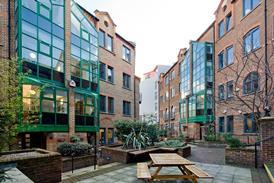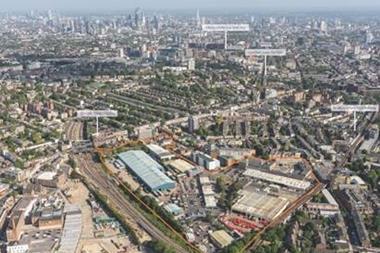The emerging trend of ‘industrial intensification’ is bringing distribution centres into much closer proximity with residential development, and bringing new opportunities for developers, occupiers and communities.

Would you choose to live in an industrial building? Not a Victorian warehouse conversion, but a fully functioning, 24/7 distribution centre? It’s an unlikely first choice for urban residents, but London’s planners and supporters of ‘industrial intensification’ want to change your mind.
In recent decades, high demand for housing has seen many industrial sites turned over to residential development – London has lost a quarter of its industrial floorspace over the last 20 years. The result is a shortage of space for logistics and small and medium-sized businesses. Meanwhile, massive growth in ecommerce means distribution facilities close to population centres are urgently needed. There’s not enough land within urban areas for sites to be dedicated to logistics or housing. Local planning authorities must work with investors and developers to balance competing demands to meet them all.
Could the solution be industrial intensification: co-locating industrial space with other uses, or even stacking them in the same building, to use precious urban land efficiently and provide jobs and homes where they are most needed.
This is a key plank of policy E7 of the London Plan, and the capital’s first example is set to open in 2023: Industria in Barking will have 133,000 sq ft of floorspace over four storeys, divided between industrial units of various sizes, a public café and meeting rooms.
Could the solution be industrial intensification: co-locating industrial space with other uses, or even stacking them in the same building, to use precious urban land efficiently and provide jobs and homes where they are most needed.
On the face of it, this doesn’t sound like a natural combination, and it brings additional complications for planning and project delivery. Extensive due diligence is required in the early stages to minimise the potential negative impact of each asset class on its neighbours.
A review of the accommodation mix is needed: are homes for families or single occupants; for owners or renters? Which logistics tenants are being targeted: large suppliers such as Amazon or smaller firms undertaking last-mile deliveries? Is the building something completely new or an old facility that has been renovated? These variables affect project design, specification and delivery. Local planning authorities will want to look closely at the visual impact on residents, and the effects of vehicle movements and round-the-clock operations, and develop mitigation strategies.
None of this is unmanageable. And while these particular asset classes have not been mixed before, others are routinely combined with similar challenges: at Wembley Park, Quintain is building thousands of new homes next to a stadium that hosts 60 to 80 major events a year.
Beyond expanding the supply of potential sites, industrial intensification brings other opportunities. What if those amenity spaces didn’t just offset the impact of the industrial activities, but actively complemented them? By opening facilities to residents, they could access new income streams and become anchors for new kinds of community. Bringing these businesses into closer proximity with people also forces them to become better neighbours – accelerating the transition to cleaner, greener forms of transport, with positive effects for urban environments. In return, industrial developers and occupiers would enjoy a much warmer welcome from planners and local stakeholders.
Once there is a proof of concept and people can see that it works, the possibilities are endless – healthcare or life sciences facilities could be introduced into the mix. Living next door to a distribution centre might not be a desirable option today, but I wouldn’t bet against it for the future.
Giles Heather is a director at Linesight






























No comments yet